Support Us
Since 1979 more than 140,000 animals have been treated by Wildlife Rescue.
Thanks to the support of individuals like you, Wildlife Rescue can provide a lifeline for animals in distress.
Supporters and friends,
Due to construction on the road leading to our facility, we are experiencing severe delays in traffic to our centre. We are working on establishing a new Admissions Centre for injured and orphaned animals that avoids construction delays. We hope to have this new site available in the next couple of weeks.
Until then, expected delays range from 15 minutes to 30 minutes, both in and out of Wildlife Rescue facilities. This delay will affect you if you are visiting to:
Wildlife Rescue is a non-profit organization, and our work is only made possible by your support. From your fundraising to your volunteering and your quick responses when you find an animal in need— we are so grateful for your continued support.
If you are planning to visit Wildlife Rescue, please call our Wildlife Rescue Support Centre at (604) 526-7275 before you arrive for the most up-to-date instructions and wait time estimates.
When a flagger asks to speak to you, always let them know you are going to Wildlife Rescue and if you do or do not have an animal with you.
If you are bringing in an injured animal, time is of the essence for the animal’s recovery, and we need your help to give them their best chance!
When you are stopped, please immediately make contact with the nearest flagger at the construction site en route to Wildlife Rescue and inform them that you have an injured animal in need of treatment. While we cannot guarantee you will be let through immediately, they will work to provide you with access to our facility as safely and quickly as possible.
If you are visiting to provide a donation or in-kind support, please call ahead or consider donating online at https://www.wildliferescue.ca/give/, through the mail to 5216 Glencarin Drive, Burnaby, BC, V5B 3C1, Canada or visiting our wish list for in-kind items.
At this time, we are actively seeking solutions to reduce these risky delays including establishing a satellite triage location, reliable transportation, and additional staff. Two sites are currently being assessed. More details to come over the next days as we secure these important resources.
With the patients rapidly on the rise, your continued support is needed now more than ever. Thank you for all you do!
Every day you learn something new as a Wildlife Rescue Dispatcher. The role involves answering many phone calls where you assist and educate the public on wildlife, arrange rescues and transports, and admit wildlife arriving at the hospital. There is never a dull moment during the summer at Wildlife Rescue! Even after four summers in this position, I continue to expand my knowledge of wildlife and encounter new, interesting situations every day! I have received a wide variety of calls concerning everything from fish to bears and many new bird species I had never heard of previously.
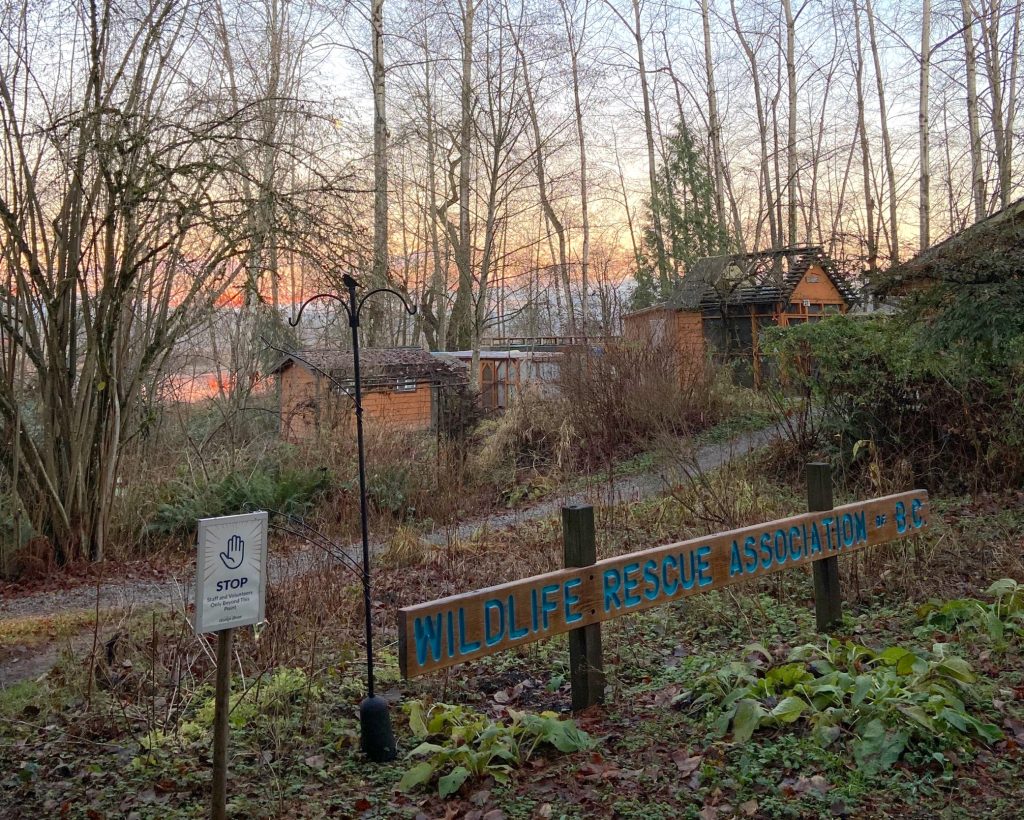
When I first started as a Wildlife Rescue Dispatcher CSJ in 2018, I was studying Geography and Environmental Science at the University of British Columbia. I began with minimal knowledge of birds and local wildlife, but the training and resources provided by Wildlife Rescue allowed me to quickly learn to assist callers. In this position, you are surrounded by knowledgeable staff and volunteers that are always willing to help and answer questions. It’s great to be surrounded by people who are passionate about wildlife and to have the opportunity to learn from them!
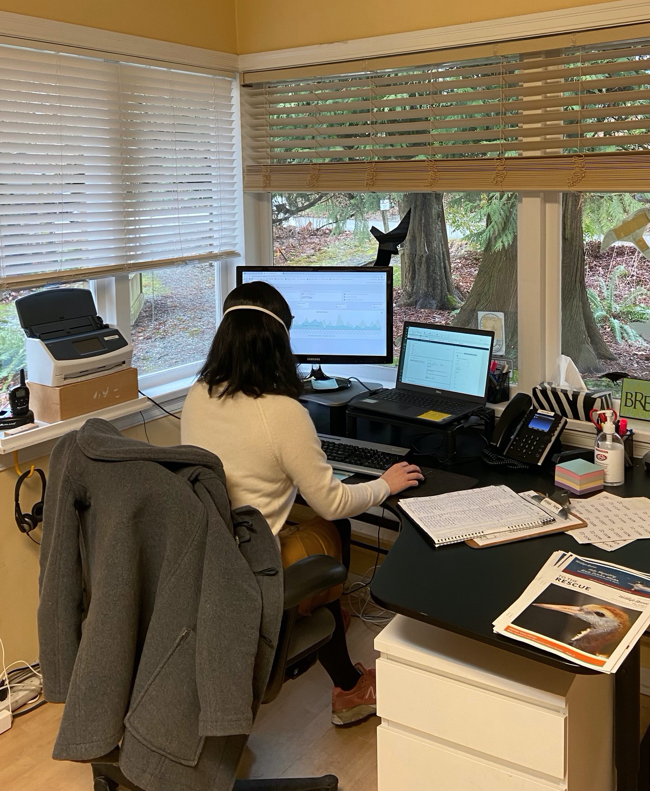
Helpline and Admissions volunteer answering calls and emails
As a Wildlife Rescue Dispatcher, it’s very rewarding to see the full picture of an animal’s rehabilitation. Starting from the phone call where someone finds an injured bird, helping them get the bird into the hospital, seeing the progress they make in care, to eventually seeing the bird leave Wildlife Rescue to be released back to the wild. Being a part of an animal’s rehabilitation and knowing you helped is an incredible feeling. It’s also very rewarding to help people in the stressful situation of finding injured or orphaned animals. People are very appreciative of the assistance we provide and it’s inspiring to see people going out of their way to help wildlife.
If you enjoy working in a fast-paced environment, continuously learning, and are interested in wildlife, Wildlife Rescue Dispatcher may be a great position for you! You will gain valuable skills such as time management, problem-solving, leadership, and public education all while helping wildlife.
Aiden Stephens
Wildlife Rescue Dispatcher 2018-2021
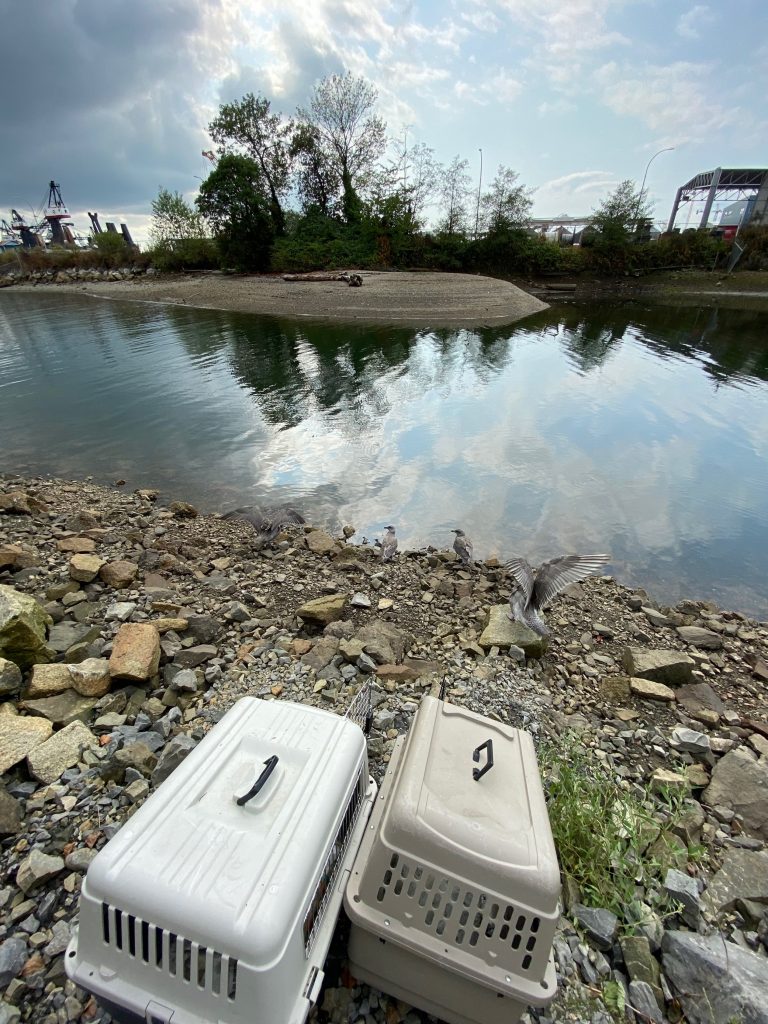
Releasing some young Glaucous-winged Gulls
Although the overall flow of everyday as a Wildlife Care Assistant at Wildlife Rescue is similar, no two days are ever exactly the same or anything even close to boring. Going in you know you will be getting to feed baby birds, clean out their enclosures, perform their daily health checks, and that you will most likely be going home with poop somewhere on your clothes. No day is ever dull because there are always new species coming in to learn about, new medical issues arising, and new problems popping up that need to be solved in ever-changing ways.

Two newly admitted orphaned Anna’s Hummingbirds in their nest
In this role, you get to work with all kinds of altricial baby birds from species as tiny as a hummingbird or chickadee nestlings (that demand to be hand-fed every 15 minutes), to some of the bigger corvid species like Northwestern Crows or Steller’s Jays. The feeling of getting to raise an orphaned bird from being completely dependent on you to be fed and cleaned all the way until it is independent and ready to be released back into the wild is incomparable.

A Black-Capped Chickadee fledgling being syringe fed
I was a Wildlife Care Assistant, Canada Summer Jobs (CSJ), in the baby bird room for the spring and summer of 2021. Before this, I had received a Bachelor of Science in Biology from the University of Calgary and worked at wildlife rehabilitation centers in Alberta, Nova Scotia, and Costa Rica, but this wasn’t the case for most of the CSJ’s. Many people who take on this role are current students who have never worked with animals a day in their lives and are looking to gain some hands-on experience before graduation.
Whether you have a long list of experience working with baby birds, or you don’t know a thing about the wildlife rehabilitation process, this is an extremely rewarding position with tons to learn. Everyone at WRA, from the staff to our amazing volunteers, is more than happy to help you learn and lend a hand. The entire property is filled with a team of people who just want to do anything they can to help out wildlife and it makes for a very welcoming and passionate place to work.

A fledgling Varied Thrush (mid moult) getting their daily health check
Every day I went to work was a crash course in bird handling, feeding babies, learning the identification and natural history of species, and so much more. In the beginning, it can be very overwhelming as there are many skills that need to be picked up quickly and every day is a bit of a juggling act to make sure all the patients get everything they need, but once you get into a groove, the days fly by and are extremely rewarding (even with all the cleaning and the poop). Every single day I went in I learned something that made me fall even more in love with birds and I got to go home knowing I got to make a difference in at least one bird’s life, and for me, there is not much more I could ask for.
Raelee Barth
Wildlife Care Assistant 2021
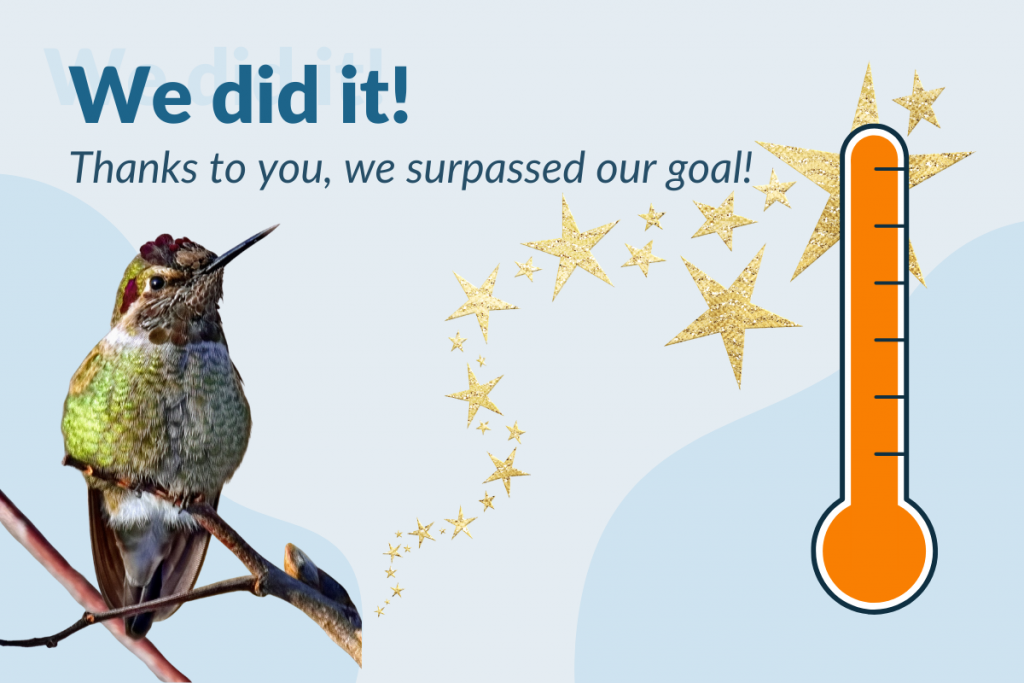
From December 27-31st, Wildlife Rescue ran a gift-matching campaign with the goal of doubling $60,000 in matching funds to a total of $120,000. Thanks to your amazing community support, we reached this initial target within the first two days which inspired new match donors to come forward with additional challenge gifts, increasing our goal!
Thanks to your generosity, we reached $233,286.01, blowing our original goal of $120,000 out of the water!
This could not have been better timing. During the unprecedented weather we experienced over the last few weeks, we took in a record number of Anna’s Hummingbirds and Red-breasted Sapsuckers with frostbite, dehydration, and damage from getting stuck to frozen metal feeders and other objects!
Thank you for your continued support! We could not do this life-saving work without you!
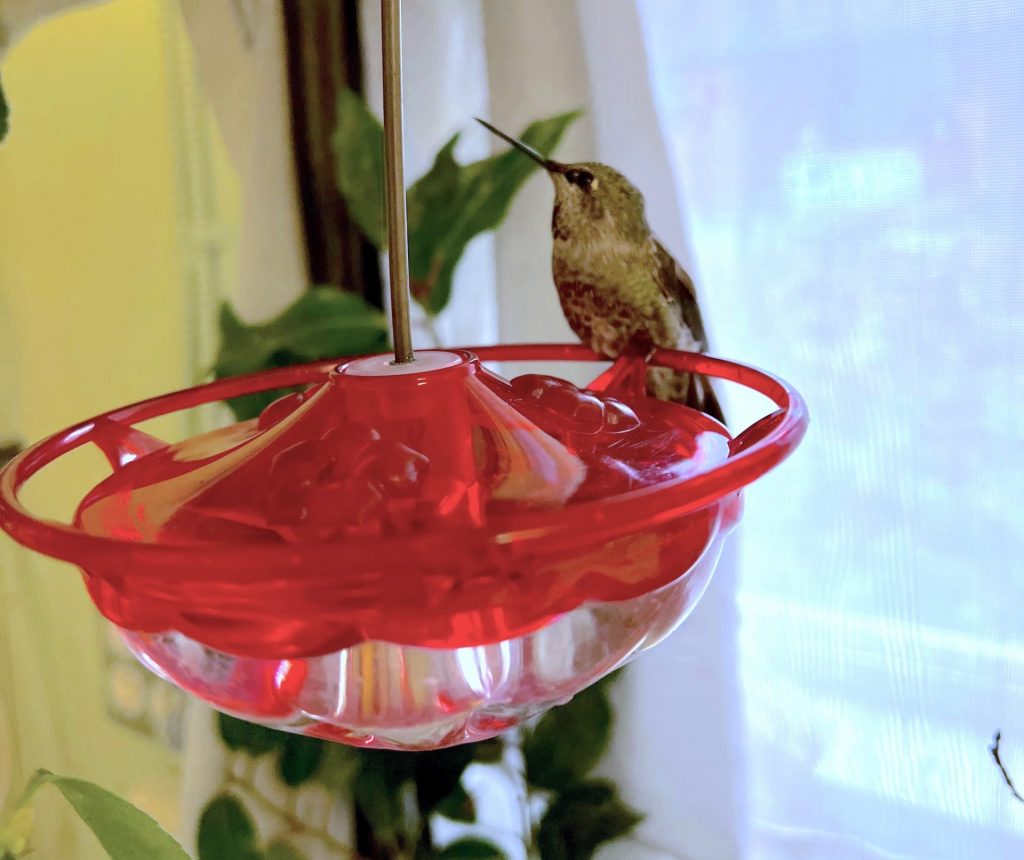
Anna’s Hummingbird in care at Wildlife Rescue
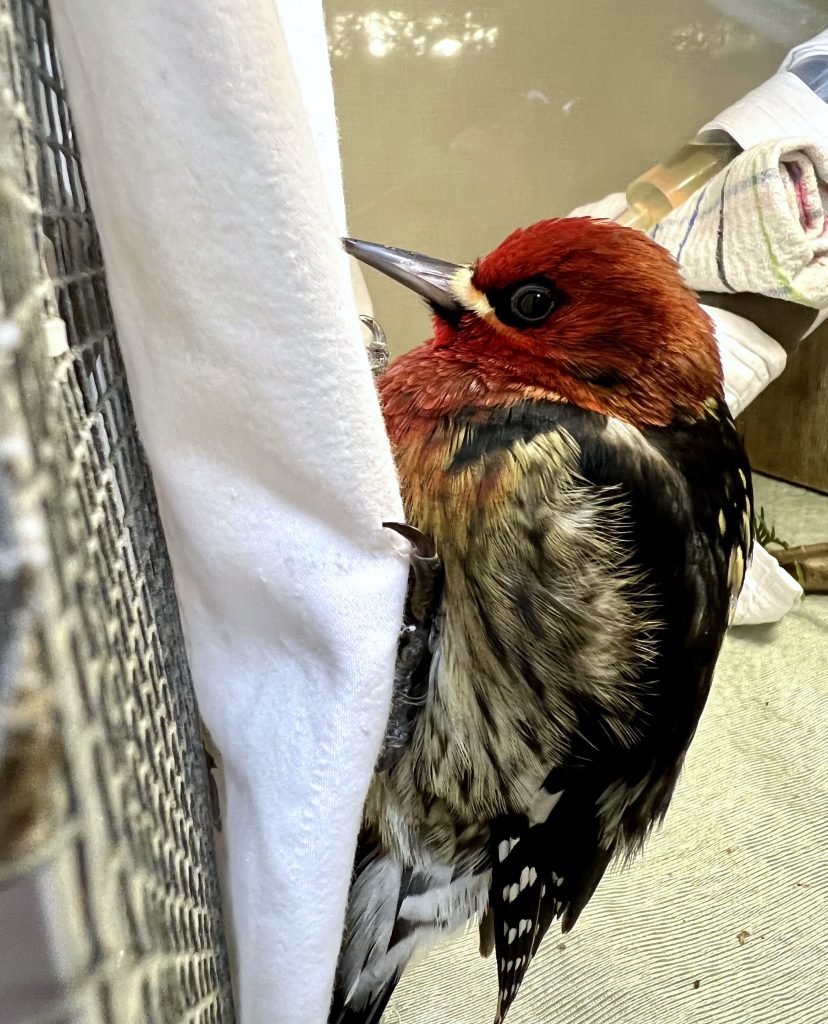
Red-breasted Sapsucker in care at Wildlife Rescue
The Arctic outflow has impacted wildlife dramatically this season! With a record-breaking drop in temperature across the Lower Mainland, hummingbirds are coming into Wildlife Rescue Association (WRA) in record numbers with cold-induced injuries.
At the beginning of June, Wildlife Rescue received possibly the cutest little duckling. Found orphaned on the side of the highway with no parents or siblings in sight, this little one was transported all the way from Whistler to Wildlife Rescue hospital. After a thorough health inspection, it was determined this bird was healthy, just slightly dehydrated from its long journey from Whistler to Burnaby.
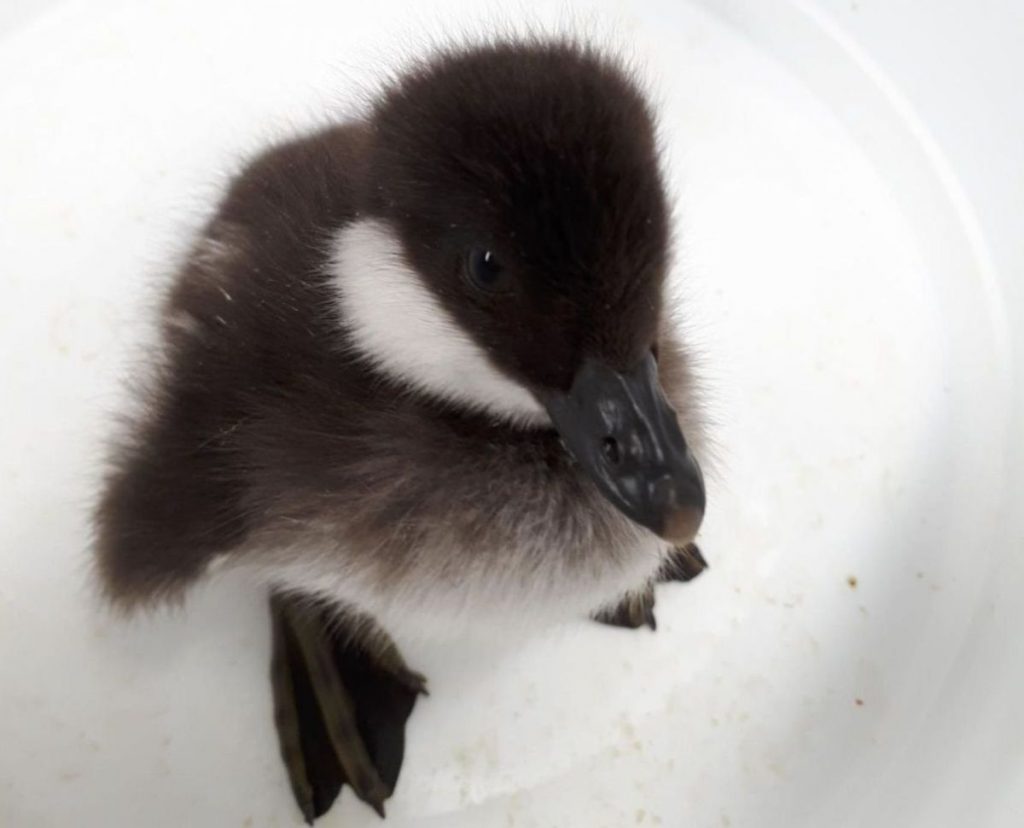
In circumstances like these, the best plan of action for healthy ducklings is to return them to their parents or foster them with another family immediately. Wildlife Rescue Support Centre staff and volunteers worked diligently for 7-days straight trying to find a suitable family to foster this little duckling with, even venturing back out to Whistler to look for a family, but there was no hope.
The orphaned duckling remained at Wildlife Rescue, where it was raised by Wildlife Rescue staff and volunteers. To provide a supportive family group environment for this duckling, they were housed with Wood Ducks who make great companions.
Caring for Sea Ducks is complicated and intensive due to their unique biology and natural behaviours.
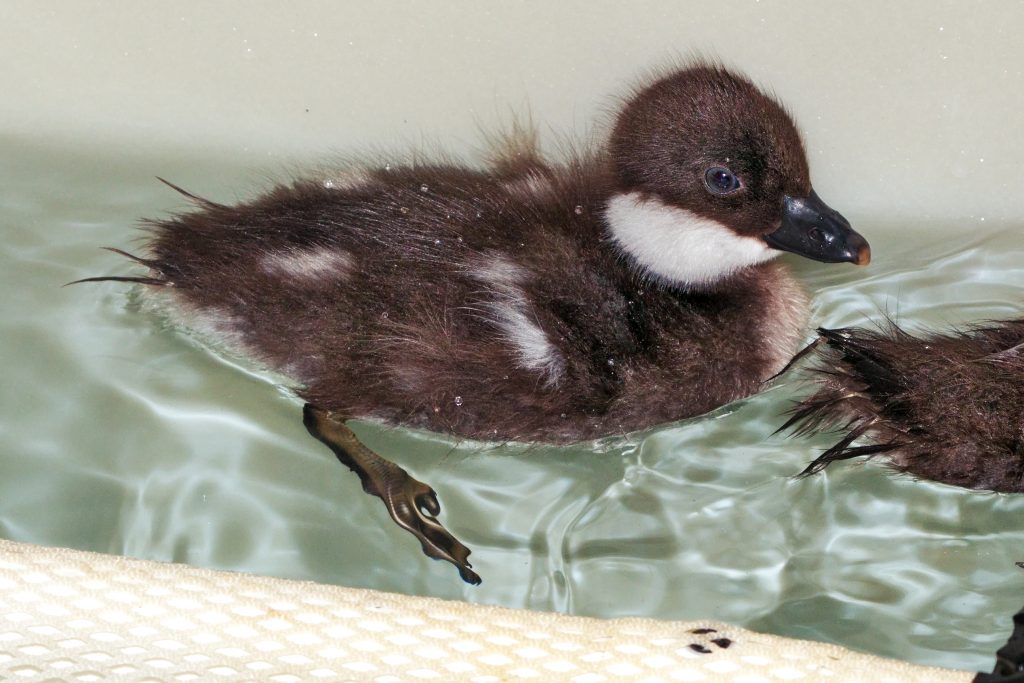
June 18th, 2021
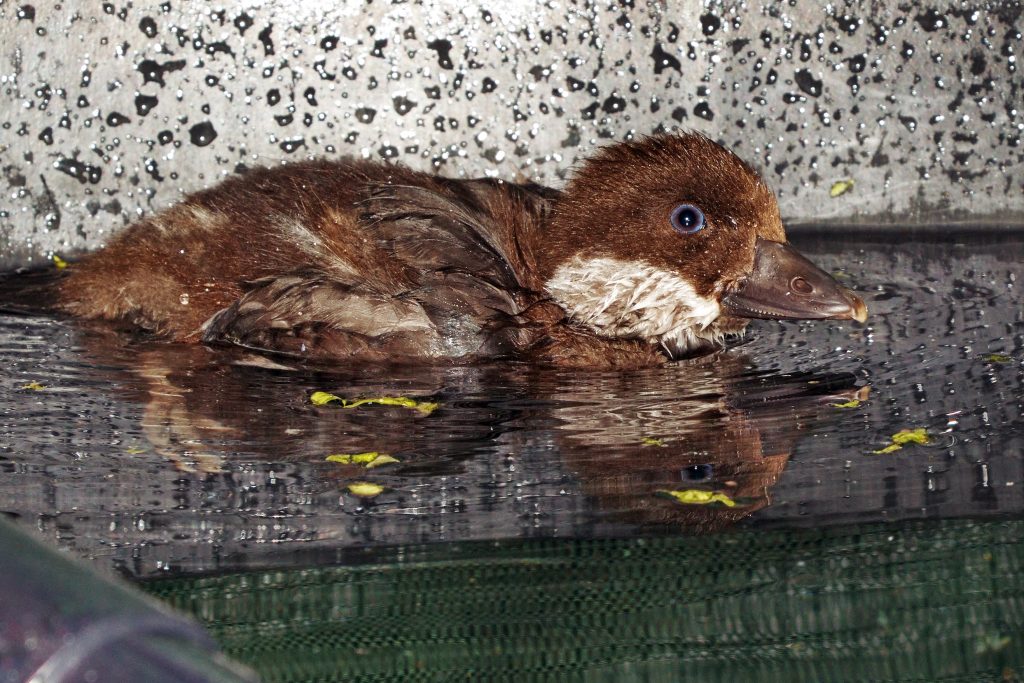
July 2nd, 2021
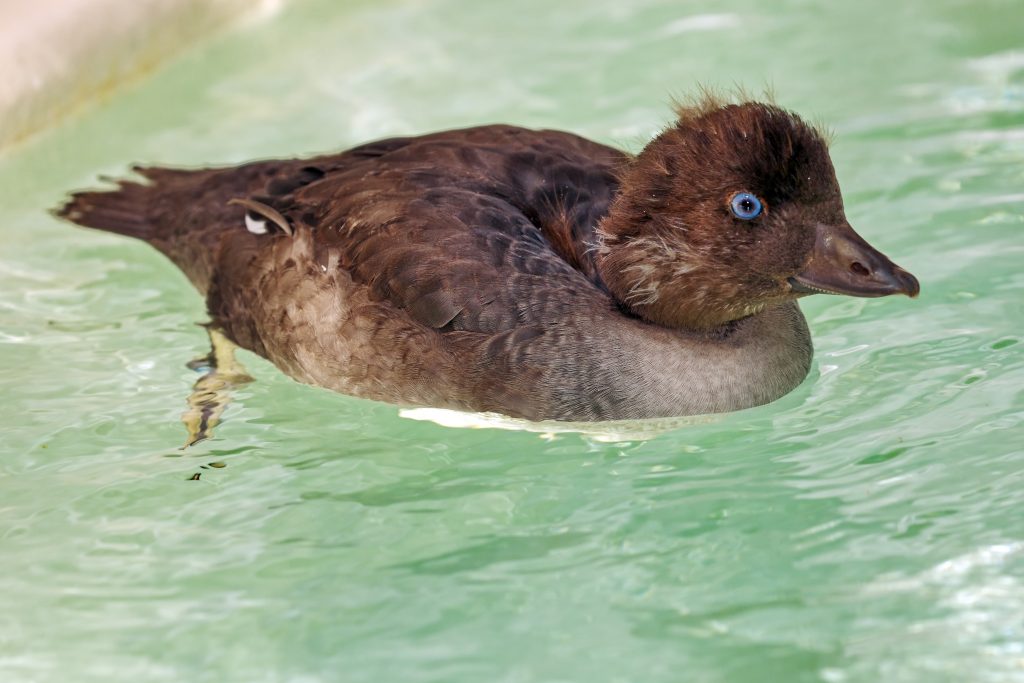
July 23rd, 2021
The Barrow’s Goldeneye (previously thought to be a Common Goldeneye) now looks like a completely different bird! Duckling Goldeneyes have dark heads with fluffy cream-white throats (as seen above). This juvenile duck lost its baby colouring, and developed mostly brown plumage! Immature Goldeneyes still lack the namesake golden-eyes of adults.
After almost two months in care, our Goldeneye was released back to nature. She took off immediately, spreading her wings out, happy to be back in nature where she belongs. Good luck little one!
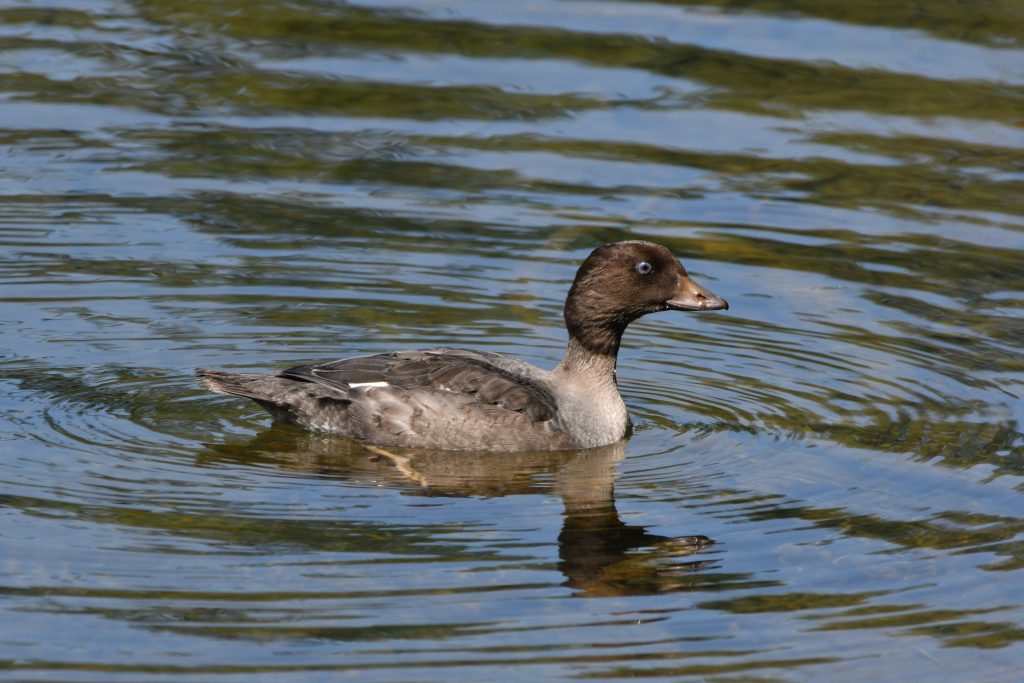
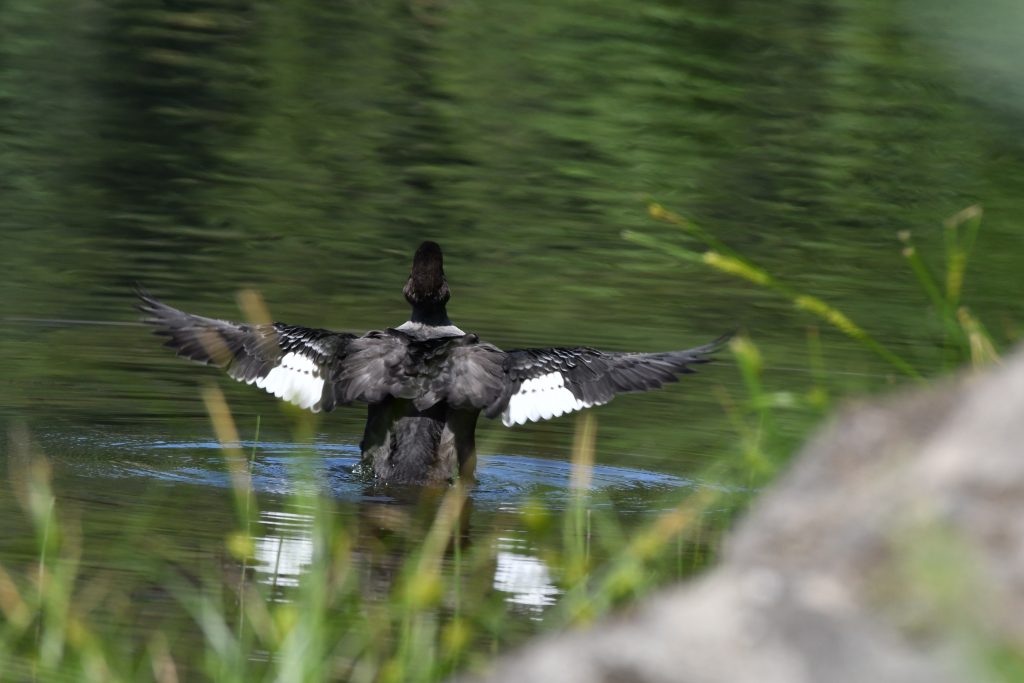
After an extended stay in care, the Common Raven from Haida Gwaii has been successfully released back to nature.
Every July and August, “Gull Season” occurs in the Lower Mainland of British Columbia. Gulls like to nest on flat rooftops in Vancouver. To stay close to their main food source of fish, gulls will nest in areas near water. These rooftop sites are typically safe from predators – humans included!
During hot weather events, you can help wildlife out by putting out a birdbath for them to cool off in and drink! Don’t have a birdbath? A shallow dish, such as a plant saucer, will suffice!
For their safety, please ensure that:
Offer shade using what you have available:
Did you know that birds lack the ability to sweat?! So how do they stay cool during these HOT summer days?
Birds have developed their own mechanisms for keeping cool, such as panting, puffing up their feathers, and fluttering their wings. They also like to do what we humans like to do – splash around in the water to cool down!
For wildlife in an urban setting, water and shade may be limited. Help wildlife stay cool by providing a safe, shallow, source of water. Keep an eye out for all types of wildlife seeking water bodies in unusual places, such as pools and water fountains, which can trap and potentially drown the animals.
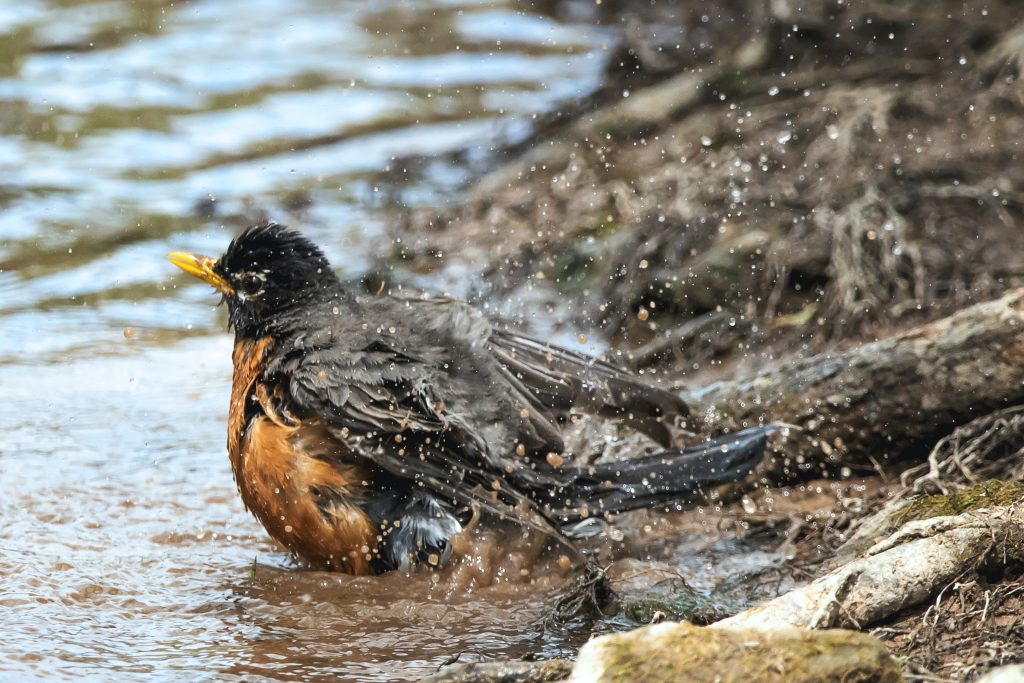
Very few animal species can sweat, so animals struggle to lose excess body heat during extreme weather events. Heat stress can cause animals to have difficulty breathing which may appear as panting, an increased respiration rate, loss of appetite, and drooling.
Signs of overheating in birds include panting, open-mouth breathing, fluffed-up, and lethargy. Some nestlings may jump from their nest due to overheating, and fledglings may wander away from their parents in search of water. Dehydration is a big concern during hot days. If you find a bird that is easily approachable (won’t fly off when approached), looks sleepy (lethargic), is fluffed up, or has any visible injuries or blood, please contact our Support Centre for assistance.
Signs of Heat Wave Induced Distress:
If you find wildlife in distress, please contact our Support Centre at (604) 526-7275. Please be aware that on busy days, our helpline staff and volunteers can have a backlog of calls exceeding two hours. If the situation is dire, follow instructions on this page on how to safely contained an injured animal.
Here at Wildlife Rescue, we work hard to keep all of our patients comfortable during these uncomfortably hot days by providing…
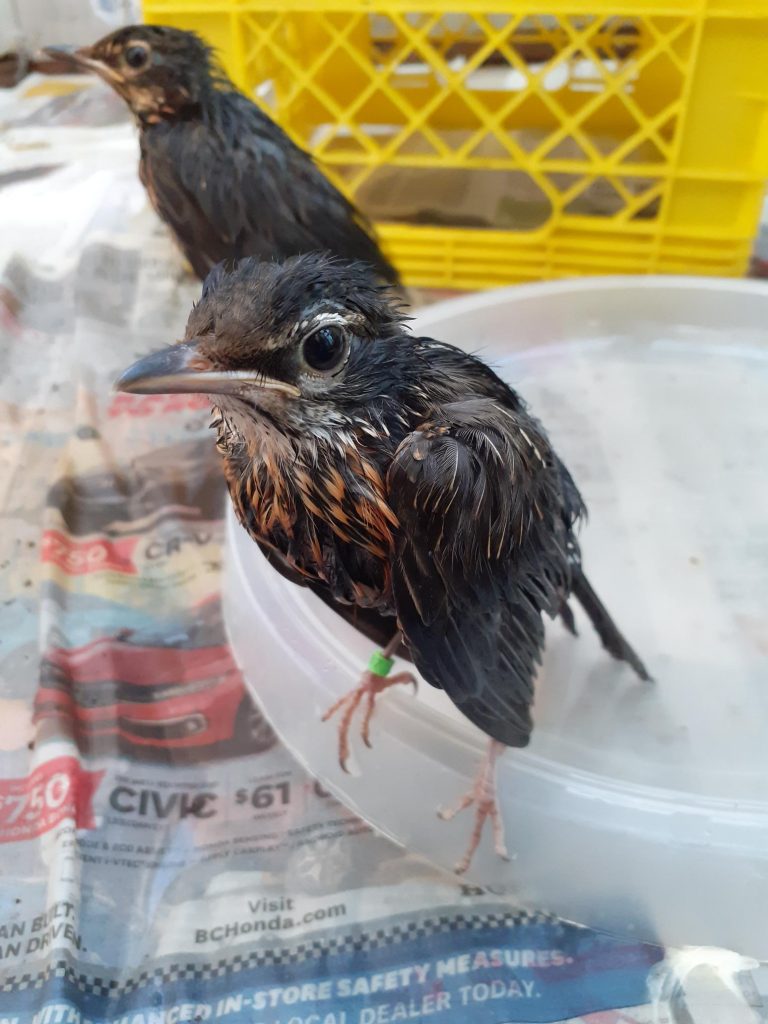
Finding a flightless baby crow is totally normal between late May and July. It does not imply that it has been abandoned or fallen out of the nest. If you come across a baby crow on the ground, stop, take a step back, and observe before intervening!